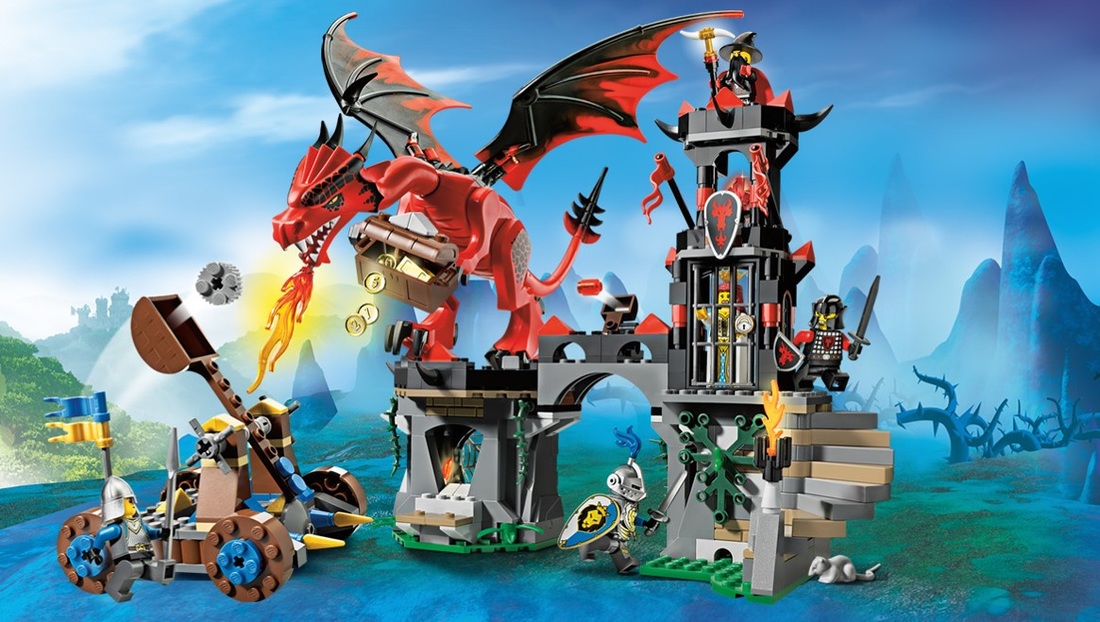|
Debra Myhill, Professor at the University of Exeter has extensively researched methods of teaching Grammar. To paraphrase her work If children have fun when learning grammar then they will be better at it.
Profession Myhill states "Grammar can be taught in ways which go beyond simply knowing terms and categories, towards encouraging pupils to love playing with grammar and language. "If teachers take this approach, the evidence suggests pupils' writing will improve." Ultimately this is why we all teach pupils - in order for them to improve. I like to take her suggestion of 'playing' literally and incorporate the use of LEGO into my teaching of grammar. In aprevious blog I outlined how Lego could be used to teach prepositions. In this blog we are looking at mood phrases or adverbs of manner using the small heads of minifigures.
5. Once the children have created their sentences allow them to use a thesaurus to find more powerful alternatives for their feeling word. If they are using the card versions you may want them to record them on the back of the card for future reference.
Demonstrate sentence constructions using the mood words or preposition of manner. e.g. The man opened his present happily. The man happily opened his present. Happily, the man opened his present. You could share an image (LEGO boxes or catalogues are perfect) with the pupils or allow them to create their own setting showing various lego men. They can then write a short narrative detailing how the different characters are feeling.
For example: Slyly, the wizard cackled as he watched the Dragon steal the gold.
Determined, the knight tried to storm the tower. Filled with anger and fury the knights unleashed their catapult.
As usual comments most welcome.
Rob
13 Comments
Book blasting
Heard of App Smashing? Just in case you haven’t it is ‘the process of using multiple apps in conjunction with one another to complete a final task.’ Perhaps then you have heard of the music mash up? Again the dictionary definition ‘a recording that combines vocal and instrumental tracks from two or more recordings.’ So these are tech answers to something teachers have probably been doing for decades. I have decided to call this ‘Book Blasting,’ using multiple books to inspire pupils to come up with a final outcome. I have decided on the following ‘rules’ in order to create the ultimate ‘book blasts.’ 1) It should be 3 or more books 2) Linked by theme/character/setting etc 3) There should be a range of genre including fiction and non-fiction. 4) They should inspire a range of writing activities. In short there should be a diverse range of books. Here is one of my examples. The three books I have chosen are: · ‘Flanimals’ by Ricky Gervais · ‘The Land of Never Believe’ by Norman Messenger · ‘Through the Looking-Glass, and What Alice Found There’ by Lewis Carroll If we start with ‘Flanimals’ we can see a range of creatures such as the ‘Grundit’ who “staggers around half-witted and grumpy, trying to start trouble.” The ‘Blungling’ who “hamble-springs around happily caring for its young. It’s not so happy when it has to watch the adult Mernimbler rip its baby’s head off.” As you can see; lots of made up creatures names along with illustrations of each creature. The descriptions include further nonsense words for description such as ‘gruntloid’ and ‘sproodling’ The students could draw their own creatures and develop descriptions for them using strange nonsense words, they could create a nonsense word class dictionary in order for there to be some commonality of language. This is where our second book of the ‘Book Blast’ comes in. ‘The Land of Never Believe’ is a wonderful book which is set out like a children’s encyclopaedia with hand drawn plates. However it is completely made up. Examples of creatures from The Land of Never Believe are ‘The Fisher Bird’ “Disguised as fish, these sleek, clever birds sit quietly in a menacing row, waiting to strike, which they do with phenomenal speed” ‘The Lurking Otter’ is another made up creature which “pretends to be a rock as it waits for passing fish.” Mr Messenger had an enormous fright when he sat on one. The students could create their own “Land of Never Believe” in order to house the new creatures that they came up with when looking at ‘Flanimals.’ The book could then inspire some explanation and ‘Non-chronological report’ writing where the children add many more details to their creatures such as habitat, feeding habits etc. This then leads onto the third book. ‘Through the looking glass and what Alice saw there’ by Lewis Carroll written in 1872. I will only use ‘The Jabberwocky,’ poem from the text as it links to the previous two, it has a number of strange creatures contained within its verses, the ‘frumious bandersnatch’ and the ‘slithy toves.’ But these pale into insignificance when compared to ‘The Jabberwocky.’ “Beware the Jabberwock, my son! The jaws that bite, the claws that catch!” These lines are the warning that the young hero is given. Teachers can analyse the poem with their class and the strange creatures that the students have invented can then be incorporated into their own poems. Following the creation of their poems the students can create a narrative which tells the story of the young boy looking for and overcoming the Jabberwocky, a retelling could be developed by the students creating their own narratives containing their own scary creature. Perhaps this would take a whole half term to create and in my classroom I would definitely be using some visual stimuli alongside but you can see how finding these three very different texts your lessons could ‘Blast off’ Enjoy ‘Book Blasting’ I would love to hear of any ideas you have for a ‘book blast’ #bookblast Thanks Rob  “Don’t tell me the moon is shining; show me the glint of light on broken glass.” Anton Chekov talking about the use of a well know literary device called ‘Show, don’t tell’ and more recently ‘Show, not tell.’ This method which has many proponents in the world of literature is not a new phenomenon. Ernest Hemingway opens his novel ‘To have and have not’ written in 1937 with the following lines: You know how it is there early in the morning in Havana with the bums still asleep against the walls of the buildings; before even the ice wagons come by with ice for the bars? Here Hemingway is painting a picture of early morning in Cuba, he could have easily written ‘One very early morning…’ some writers may argue that these examples are still ‘telling’ although somewhat elaborately. Calling it ‘Show, not tell though does simplify it for our students and is a great way of getting them to use vivid description. Evan Marshall from http://themarshallplan.net/ says: Don’t just write “The subway station was shabby.” Write: “Near the edge of the platform, a man with knotted hair held out a Dixie cup to no one in particular, calling, ‘Spare some change? Spare some change?’ Swirls of iridescent orange graffiti covered the Canal Street sign. The whole place smelled of urine and potato chips.” Perhaps both are telling but one is telling in much more detail. The latter has much more detail and drama. I use film widely in my teaching and I use film to demonstrate this technique. The following two extracts are from a music video called 'Titanium' by David Guetta.
These two excerpts are from one of my favourite films on The Literacy Shed, called 'Catch a Lot.'
There are many other examples in the films on www.literacyshed.com and I may follow this blog up with them if people think it is useful. Thanks for reading and I hope you leave a comment. Rob |
Archives
July 2020
Categories
All
|

 RSS Feed
RSS Feed
